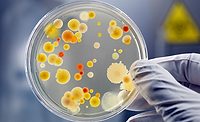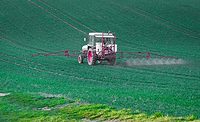Report: Noncompliance Rate for Pesticides Decreased in 2019

According to a report published by the European Food Safety Authority (EFSA), the noncompliance rate for pesticides in foods decreased in 2019.
The findings were based on data from national controls done by EU member states, plus Iceland and Norway.
Of the 96,302 samples analyzed, 96.1 percent fell below the maximum residue level (MRL) in 2019. In 3,720 samples, 3.9 percent exceeded this level, and 2,252 were noncompliant based on measurement uncertainty.
The number of samples tested in 2019 increased when compared to 2018's number of 91,015. In 2018, the MRL exceedance rate was 4.5 percent and the noncompliance rate was 2.7 percent.
Firponil, an insecticide, still was present in eggs, with 23 samples, and in animal fat, with 8 samples. Because it is a veterinary medical product or biocide, its presence in eggs is the result of illegal use. EFSA advised member states to continue analyzing for it in animal products. Ethylene oxide, which had thousands of recalls across Europe in late 2020, was not mentioned in the report.
In 2019, the reporting countries looked for 799 different pesticides. On average, 233 different pesticides were analyzed per sample. National control programs tend to target products likely to contain pesticide residues or for which infringements have been identified in previous years.
Including all samples, 44.1 percent contained one or more pesticides in quantifiable concentrations, down from 47.8 percent in 2018. Multiple residues were found in 25,584 samples. In a dried fruit vine sample of unknown origin, for example, up to 28 different pesticides were found. In 313 tests, more than 10 pesticides were detected in the same sample.
The most frequently found pesticides were copper compounds, fosetyl, phosphane, bromide ion, and chlorates. The pesticide with the highest MRL exceedance rate was chlorate, which lines up with previous years' findings.
Looking for a reprint of this article?
From high-res PDFs to custom plaques, order your copy today!









